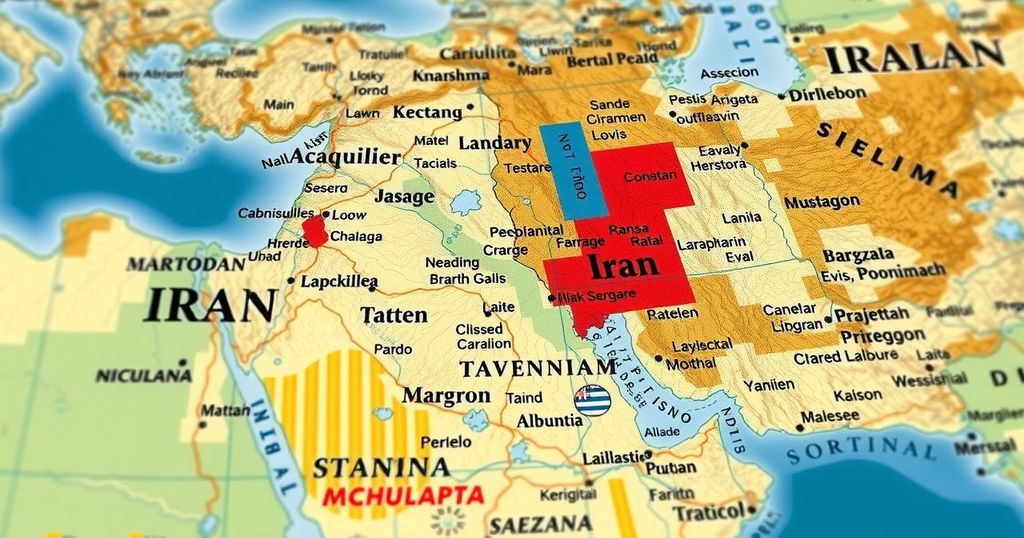Iran has cited 19th-century British maps in its long-standing dispute with the UAE over three strategic islands at the Strait of Hormuz. This dispute is heightened by the EU’s condemnation of Iran’s claims and seeks to reshape ongoing diplomatic relationships in the Gulf. Despite Iran’s historical assertions, the UAE maintains its claim over the islands, further complicating regional dynamics and relations with the EU and UN.
Iran is invoking 19th-century British maps to bolster its claims over three contentious islands at the Strait of Hormuz, amid a growing dispute with Gulf states, particularly the United Arab Emirates (UAE). This diplomatic conflict has intensified following the European Union’s recent statement condemning Iran’s perceived occupation of these islands, which the EU asserts violates the sovereignty of the UAE and has drawn backing from the UN Security Council, including China and Russia. The islands in question—Abu Musa, Greater Tunb, and Lesser Tunb—were originally governed by Britain, which had failed to settle their status before withdrawing from the region in 1971. Iran’s historical claims date back to the 6th century BC, asserting that the islands were always part of the Persian Empire. Despite this, the UAE has consistently maintained its own sovereignty claims since its formation in 1971, particularly over Abu Musa, which is under joint administration but has since been dominated by Iranian forces. Iranian officials are now relying on maps commissioned by the British War Office in the late 19th century, which distinguished the islands as part of Iran. Diplomatic ties and regional dynamics are strained, as Iran seeks to strengthen relations with its Gulf neighbors while simultaneously rejecting international arbitration regarding the territorial dispute. The situation continues to evolve, further complicated by political rhetoric and nationalist sentiments in both Iran and the UAE.
The dispute over the three islands—Abu Musa, Greater Tunb, and Lesser Tunb—remains a significant and sensitive issue in Iranian and UAE relations. Originating from colonial-era negotiations and territorial delineations, the conflict is compounded by modern geopolitical tensions in the region. The islands are strategically located at the entrance to the Strait of Hormuz, a vital channel for global oil transportation. Understanding the historical context of British involvement and the subsequent claims made by both Iran and the UAE is critical for grasping the nuances of the ongoing confrontation.
In conclusion, the territorial dispute over the islands of Abu Musa, Greater Tunb, and Lesser Tunb illustrates the complexity of Iran-UAE relations, particularly in light of historical claims traced back to British colonial maps. Recent diplomatic developments, including EU involvement, have heightened tensions, showcasing the delicate balance Iran seeks to maintain in the Gulf while confronting external assertions of territorial integrity. The dispute continues to evolve, influenced by national pride and strategic interests in the volatile Middle East region.
Original Source: www.theguardian.com






